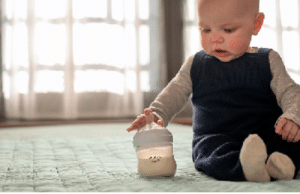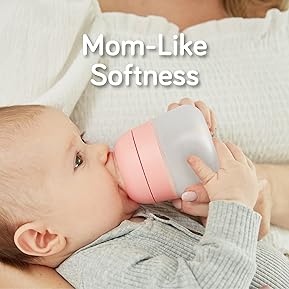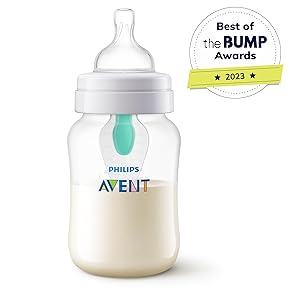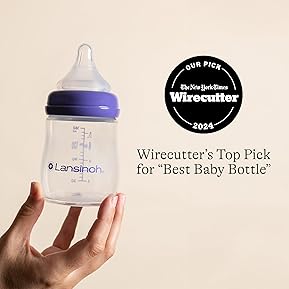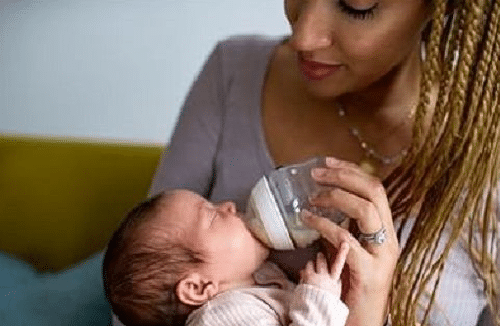
best bottles for breastfed babies
Best bottles for breastfed babies. Embarking on the journey of bottle feeding for your breastfed baby? Discover the perfect blend of convenience and comfort with our comprehensive guide to the best bottles for breastfed babies. Navigating the world of baby bottles has never been easier – explore our top picks for a seamless feeding experience.
However, you must choose which bottle is most suitable for your child before you can enjoy this revolutionary change. We spoke with a lactation consultant to get advice on how to initiate bottle feedings and to find the finest bottles for breastfed kids, all in an effort to streamline your search.
Contents
How the Best Baby Bottles We Tested and Chose
The Babybassinetworld editors have researched parents’ and babies’ bottle-feeding demands for three years and found the 34 most popular baby bottles that fit those needs. We selected 27 for testing based on product characteristics, reviews, and design advancements. From there:
We evaluated 27 infant bottles in 7 households. Our testers—including me—cleaned, sanitized, filled, and fed our babies. After testing, we assessed each for use, cleanliness, efficacy, quality, and value.
Over 650 parents in the Babybassinetworld community were invited to share their experiences with baby bottles and their benefits and disadvantages.
We interviewed three lactation experts to learn about baby bottle safety and features. Flow speed, material, and venting systems were also examined while selecting bottles for our compilation.
We followed FDA safety guidelines and examined relevant scientific publications to discover how bottle design affects efficacy in various use scenarios. We searched forums, message boards, and user reviews to see how these bottles worked for parents across.
Introduce a bottle to a breastfed baby when?
Before giving your infant a bottle, wait many weeks if they would solely breastfeed. This will reduce breast confusion and help your baby latch and suckle. McCann says introducing a bottle too early might create nursing issues, while waiting too long may make it tougher for the infant to take it. “Introducing a bottle at 3-4 weeks is ideal. Most infants have developed good breast latching abilities by now.
If Your Baby Refuses the Bottle?
“There’s no single perfect bottle for every baby,” McCann says. Babies may decline bottles for several reasons. It may help to try a new bottle, feeding posture, or milk temperature. McCann suggests seeking assistance if rejection continues. “If they struggle to take one, it’s often because they need help developing bottle-feeding skills or have physical challenges,” she explains. A lactation consultant may be able to find the problem and assist the infant with bottle feeding.
Our Top Picks
Best Bottles for Breastfed Babies
1. Nanobebe Flexy Silicone Baby Bottle, Anti-Colic, Natural Feel, Non-Collapsing Nipple
The Nanobebe Flexy Silicone Baby Bottle is designed to make feeding stress-free and more natural for both parents and babies. Crafted from soft, medical-grade silicone, this award-winning bottle mimics the feel of breastfeeding while reducing common feeding issues such as colic, gas, and reflux.
Its innovative AirFree vent system keeps the nipple full of milk—not air—allowing babies to feed comfortably in an upright position. With a stable non-tip base, wide neck for quick cleaning, and just a few easy-to-assemble parts, this bottle is as convenient as it is effective. BPA-free and safe, it adapts to your feeding routine with or without the vent.
No products found.
Best for: Babies with colic, gas, or reflux.
Why it’s great: Trusted design, natural feel, and award-winning performance.
Pros:
- Anti-colic AirFree vent
- Non-collapsing, breast-like nipple
- Wide neck for easy cleaning
- Stable, non-tip base
Cons:
- May require frequent washing due to the silicone material
👉 Give your baby the comfort they deserve—choose Nanobebe Flexy today!
2. Philips AVENT Anti-Colic Baby Bottles
Philips AVENT Anti-Colic Baby Bottles feature an AirFree vent to minimize colic symptoms. With a clear design and a pack of four, these bottles offer functionality and convenience.
The Philips Avent Anti-Colic Baby Bottle is designed to soothe your little one while reducing feeding issues like colic, gas, and reflux. This award-winning bottle, recognized as the Best Baby Bottle for Gassy Babies (Best of the Bump 2025), features an innovative AirFree vent that keeps the nipple filled with milk, not air. Ideal for feeding in an upright position, the bottle promotes a comfortable feeding experience.
Key Features:
- 9oz Capacity with Flow 2 Nipples (1m+)
- Award-Winning Design for Gassy Babies
- AirFree Vent for reduced air intake
- Easy to Clean with a wide neck and minimal parts
- BPA Free, usable with or without the vent
No products found.
Why It’s Great:
- Reduces discomfort during feeding
- Promotes a natural feeding position
Pros:
- Award-winning design
- Easy assembly and cleaning
- Versatile for different feeding styles
Cons:
- May require adjustment for some babies
Act now! Give your baby the comfort they deserve with Philips Avent. Buy yours today!
3. Lansinoh Baby Bottles for Breastfeeding Babies
The Lansinoh Anti-Colic Baby Bottles are designed specifically for breastfeeding babies! This 5-ounce, 3-count set includes slow-flow nipples that mimic the natural latch, ensuring a seamless transition from breast to bottle. Lansinoh Baby Bottles are tailored for breastfeeding babies, offering a 3-count pack with slow-flow nipples. The inclusion of slow-flow nipples makes it suitable for newborns and breastfed infants.
Key Features:
- Easily Accepted by Baby: Ultra-soft, wide nipples mold to your baby’s mouth for a secure latch.
- Clinically Proven Anti-Colic System: Reduces colic by minimizing air intake, preventing gas and fussiness.
- Supports Natural Feeding Rhythm: Flexible nipples allow babies to control the flow, promoting baby-led feeding.
- Grows with Your Baby: Compatible with all Lansinoh bottles and available in multiple nipple sizes.
- Easy-Clean Design: Dishwasher-safe with only three pieces for hassle-free cleaning.
No products found.
Why It’s Great:
- Promotes comfort and peace during feedings.
- Reduces nipple confusion for smoother transitions.
Pros:
- They are specifically designed for breastfeeding compatibility.
- Multiple bottles provide a steady supply.
- Slow-flow nipples suit newborn feeding patterns.
Cons:
- Limited to Lansinoh bottle compatibility.
Take Action Now: Ensure peaceful feedings for your little one—order your Lansinoh Anti-Colic Baby Bottles today!
4. Comotomo Baby Bottle
Discover the Comotomo Baby Bottle Double Pack, designed for seamless breastfeeding transitions. With its innovative features, this bottle is perfect for new parents! The Comotomo Baby Bottle stands out with its distinct design, featuring a squeezable, skin-like silicone body. The dual-pack in green offers a unique approach to feeding with a breast-like feel.
Key Features:
- Seamless Transition: Mimics breastfeeding to help babies switch between breast and bottle effortlessly.
- Designed to Latch: Wide mound with a breast-like design ensures a comfortable feeding experience.
- Easy to Clean: The wide neck makes washing a breeze, saving you time.
- Anti-Colic Vents: Smart, non-leaking vents promote consistent milk flow, reducing colic, gas, and spit-up.
- Soft & Squeezy: Made from high-quality, food-grade silicone for a comforting feel; BPA, PVC, and phthalate-free.
No products found.
Best For: Breastfeeding moms transitioning to bottle-feeding.
Why It’s Great:
- Promotes a natural feeding experience.
- Hassle-free cleaning.
- Safe for your baby.
Pros:
- The unique, breast-like design encourages natural feeding.
- Squeezable body mimics the breastfeeding experience.
- Dual-pack offers value for money.
Cons:
- It may be bulkier compared to traditional bottles.
- Limited color options for personalization.
Take Action: Grab your Comotomo Baby Bottle Double Pack today and make feeding time a joy for both you and your baby!
5. Tommee Tippee Closer To Nature Baby Bottles
Make feeding time easier with the Tommee Tippee Natural Start Anti-Colic 9 oz Baby Bottles. Designed to mimic the natural feel of breastfeeding, these bottles feature a soft silicone, breast-like nipple that encourages a natural latch and reduces nipple confusion. The anti-colic valve minimizes air intake, helping prevent colic, gas, and reflux.
With a 100% leakproof design, you can trust that mealtime stays mess-free. Perfect for pace feeding, the nipple flexes and stretches like a real breast, allowing babies to feed comfortably at their own rhythm. Plus, the self-sterilizing feature makes cleaning fast and hassle-free in just three minutes.
Features:
- Breast-like nipple for natural latch.
- Slow-flow nipple for comfortable feeding.
- An anti-colic valve reduces discomfort.
- 4-count pack for ample supply.
No products found.
Best for: Parents seeking a smooth transition between breast and bottle.
Why it’s great: Combines natural comfort, anti-colic design, and easy cleaning.
Pros:
- Seamless breast-to-bottle transition
- Leakproof and mess-free
- Self-sterilizing in minutes
Cons:
- Slow flow may be too gentle for older babies
👉 Give your baby a comfortable, colic-free feeding experience—add to cart today!
Comparison Table: Best Bottles for Breastfed Babies
| Bottle Model | Nipple Shape & Feel | Anti-Colic / Vent Feature | Material / Cleaning Ease | Pros | Cons |
|---|---|---|---|---|---|
| MAM Easy Start Anti-Colic 260 ml | Soft, breast-like nipple; wide base helps latch depth | Double-vented anti-colic system to reduce air swallowing | BPA-free plastic; Self-sterilizing option; few parts to clean | Smooth transition, good for newborns with colic; ease of cleaning | Some babies may prefer softer silicone; plastic may stain over time |
| Chicco Natural Feeling | Ultra-soft teat mimics breast elasticity | Basic venting; not as complex as anti-colic as others | Soft silicone + moderate parts; glass variant not always available (Serenity Kids) | Very natural feel; good for breast & bottle switching | More expensive; silicone may retain odor; slower flow nipples need monitoring |
| NUK Perfect Match | Nipple shape very close to mom’s breast; helps deep latch | Some anti-colic venting; moderate air flow control | Plastic materials; easy to clean; three-part design | Good transition; widely available; more affordable | Flow may be too fast for some; plastic — might need more frequent replacements |
| Philips Avent Natural Response / Anti-Colic with AirFree Vent | Breast-shaped nipple; responsive feel; baby controls flow | Advanced vent (AirFree) to reduce gas & keep nipple milk-filled | BPA-free plastic or glass options; wide neck; fewer parts for easy cleaning | Excellent anti-colic; good for breast-bottle combinations; durable | More parts may mean more cleaning; glass is heavier; the cost higher |
| Tommee Tippee Natural Start / Advanced Anti-Colic | Soft nipple that flexes & stretches like a breast; slow flow options | Valved design to minimize air swallowing; leak-proof features | BPA-free; easy to self-sterilize; fewer parts | Great transition bottle; good for keeping nipple confusion low; convenient features for busy caregivers | Some damper/harder cleaning of anti-colic parts; some babies may prefer firmer flow earlier |
Last update on 2024-02-02 / Affiliate links / Images, Product Titles, and Product Highlights from Amazon Product Advertising API
Editors’ Note: As of September 5, 2025. After reviewing the article, I have added more complete information and replaced it with a discontinued product. The review is edited to make it more user-friendly and easier to understand. View our buying guide
How to choose bottles for breastfed babies
When it comes to choosing the best bottles for breastfed babies, parents often turn to plastic infant bottles due to their affordability, lightweight nature, and durability. However, it’s important to note that cleaning plastic bottles can be challenging, as the American Academy of Pediatrics (AAP) advises against heating them in dishwashers or microwaves.
Glass baby bottles have gained popularity for their convenience, making them one of the best bottles for breastfed babies, as they are both dishwasher and microwave-safe. While they are heavier and can shatter, many parents opt for silicone sleeves to provide extra protection. Additionally, flexible silicone bottles are becoming increasingly sought after, although they typically come at a higher price point
When selecting a bottle, consider the nipple width. A wider nipple can create a larger surface area for the baby’s mouth, which is beneficial for those with a bigger latch. Conversely, a narrower nipple may offer better control over milk flow and help achieve a more precise latch. This means that parents may need to experiment with various types of nipples to find the perfect fit for their baby.
Finding the right bottle can be a process of trial and error, as many babies have specific preferences. It’s common for parents to purchase multiple bottles before discovering the best option that suits their breastfed baby. By understanding these factors, you can make an informed decision and choose the best bottles for breastfed babies that meet your family’s needs.
FAQs
Q. When can I give my breastfed child a bottle?
According to experts, a breastfed infant should be introduced to a bottle at a time of roughly three weeks. Waiting a few weeks allows your infant to get used to nursing and gives your milk production time to establish itself. If in doubt, visit a lactation specialist or your physician to find out what they suggest. When your baby has just woken up and is not hungry or irritable, Dr. Resnick advises providing a bottle and having someone other than the nursing mother provide the meal.
Q. How can I purchase a bottle for my breastfeeding child?
The following characteristics may be important to take into account when purchasing bottles, especially for breastfed infants:
Q. Which nipple flow is ideal for a baby that is breastfed?
Choose a slow-flowing nipple (also known as Stage 1) when you let your breastfed baby take a bottle for the very first time. According to Dr. Resnick, a nipple with a slower flow more closely mimics the feeling of nursing.
Q. What size bottle do I need for my baby?
Typically, baby bottle companies offer two sizes of bottles: four or five ounces and eight or nine ounces. Since your infant will take up to 4 ounces in a single meal at that age, the smaller size is preferable for bottle-feeding them. Your baby will begin to drink from 8-ounce or bigger bottles as he gets bigger. On the other hand, parents who would rather purchase fewer bottles might start by filling a larger bottle with less milk.
Final Thought
In the realm of parenting, the quest for the “Best Bottles for Breastfed Babies” is not just about finding a vessel for nourishment; it’s a journey towards ensuring the utmost comfort and convenience for both baby and parent. As we conclude this exploration, remember that the right bottle can transform feeding into a seamless, enjoyable experience.
By selecting a bottle that complements the breastfeeding journey, you’re not just choosing a product – you’re embracing a tool that fosters bonding and makes every feeding moment special. With an array of options available, the final thought is a simple yet crucial one: choose with care, prioritize your baby’s comfort, and savor the precious moments of nourishment and connection.
See more:
